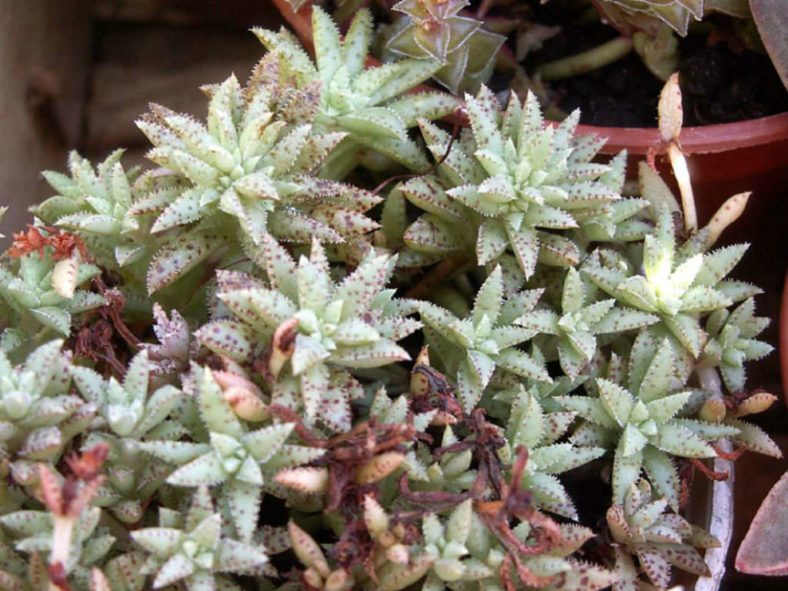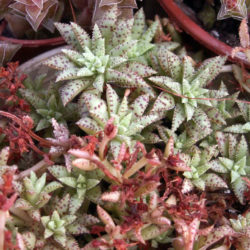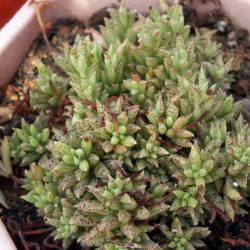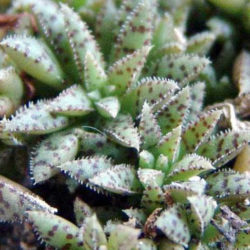Scientific Name
Crassula exilis subsp. sedifolia (N.E.Br.) Toelken
Synonym(s)
Crassula aurosensis, Crassula sedifolia
Scientific Classification
Family: Crassulaceae
Subfamily: Crassuloideae
Genus: Crassula
Description
Crassula exilis subsp. sedifolia is a much-branched succulent that forms dense mats of rather loose rosettes of fleshy, usually grey-green leaves with dark, irregularly placed dimpled spots on the upper surface. The short, woody branches continue into a similarly thick root. They are up to 0.4 inches (1 cm) in diameter. The leaves are linear-elliptic, more or less triangular in cross-section, and can reach 0.6 inches (1.5 cm) in length and 0.12 inches (0.3 cm) in width.
The flowers are white to pinkish, with a musty honey-like fragrance, and appear in late summer to fall. They are cup-shaped and up to 0.12 inches (0.3 cm) in diameter.
This subspecies is more robust and distinguished from the other two by the absence of hairs on the peduncle.
Origin
Crassula exilis subsp. sedifolia is native to South Africa (Northern Cape) and southern Namibia. It grows in rock crevices, usually on the south and southwestern aspects of cliffs or rock outcrops.

Hardiness
USDA hardiness zone 9b to 11b: from 25 °F (−3.9 °C) to 50 °F (+10 °C).
How to Grow and Care
Crassulas are easy to grow but susceptible to mealy bugs and fungal diseases. Overwatering is sure to be fatal, as with all succulents, so err on the side of too dry rather than too wet. Never let your Crassula sit in water. If you water from beneath by letting the plant sit in a saucer of water, ensure to pour off any excess water after a few minutes.
Crassulas are generally started by division, offsets, or leaf cuttings. Plants can be easily propagated from a single leaf: sprout leaves by placing them into a succulent or cacti mix, then covering the dish until they sprout.
Repot as needed, preferably during the warm season. To repot a succulent, ensure the soil is dry before repotting, then gently remove the pot. Knock away the old soil from the roots, removing any rotted or dead roots. Treat any cuts with a fungicide. Place the plant in its new pot and backfill it with potting soil, spreading the roots out as you repot. Leave the plant dry for a week or so, then begin to water lightly to reduce the risk of root rot.
See more at How to Grow and Care for Crassula.
Links
- Back to genus Crassula
- Succupedia: Browse succulents by Scientific Name, Common Name, Genus, Family, USDA Hardiness Zone, Origin, or cacti by Genus
Photo Gallery
Click on a photo to see a larger version.


